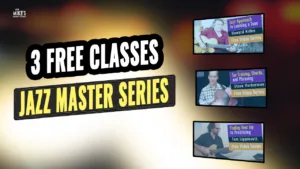After going to hear a recital of baroque music recently, I was reminded of the way that composers over the centuries made such harmonically beautiful music despite drawing on what, in jazz terms, could appear to be a rather limited palette of quite simple chords. Of course, these long-established harmonic principles also formed the vocabulary for the Great American Songbook classics that we all love to improvise on.
In my view, this stuff really isn’t as complex as it’s sometimes made out to be. It would seem logical that the same devices used to create these tunes, decades ago, could be used to inform our attempts to solo over them. It’s never really made sense to me when we try to explain Cole Porter songs in terms of a analytical language that he almost certainly wouldn’t have recognized.
Over the last fifty years or so, we have seen the emergence of “jazz theory” as a discipline in its own right. I don’t intend to add to the debates that already exist about the merits of various approaches – all these things can have great merit when used in the right context. Nevertheless, the aim of this session is to try and explain the very simple infrastructure at work in jazz standards, and to show that there are times when a very literal ‘match the scale to the chord symbol’ approach may well confuse matters by leading us into poor note choices.
If you understand major and minor keys, you know everything you need to get started, and shouldn’t go far wrong. Maybe we can put away those huge textbooks filled with terrifying mathematical concepts that make our brains ache – at least for a while? I like wrestling with all that stuff sometimes too, but there must be easier ways to get started…
IN THIS CLASS
For the Less Experienced
For the less experienced player, I aim to offer some understanding of how standard songs work, so that you have some ideas about how to quickly find effective note choices against changing chords. If you’ve ever wondered why that textbook Mixolydian scale doesn’t sound right over the dominant 7th you’re playing over, the answers can be found here.
For the Experienced Improviser
I hope to offer some perspectives that might not have occurred to you, even if you already solo pretty fluently over chord changes. There’s a good chance that there might be easier ways to think about some of those awkward harmonic corners in your favourite tunes.
This class includes:
- A detailed 22 page PDF booklet with analysis, chord symbols, standard notation, and TAB.
- Synchronized on-screen captions.
- Explanation of some centuries-old harmonic concepts which shed light on why the chords in standard songs do what they do, and offer an alternative to some of the really daunting jazz theory concepts such as diminished scales and altered modes etc.
- Analysis of two well-known standards, contrasting older and more recent ways of looking at what’s happening.
- Example lines notated and tabbed – not only mine, but some from great jazz recordings too!
- Running time: 1 hour 27 minutes
Hopefully there’s something here for everyone – look forward to seeing you in class!
Jamie
Class Content
| Making the Changes - Jamie Taylor's approach | |||
| Making the Changes – Jamie Taylor’s approach | 01:27:00 | ||
Course Reviews
No Reviews found for this course.











